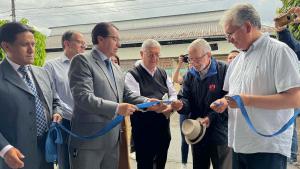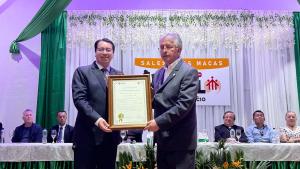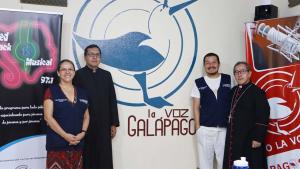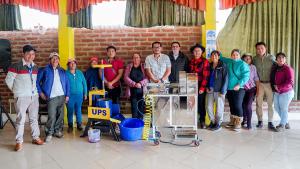Noticia
The UPS-Cuenca Robotics Club won 2nd place at the "X Ecuadorian Robotics Championship-CER 2014"
The UPS-Cuenca Robotics Club won 2nd place at the "X Ecuadorian Robotics Championship-CER 2014" held in the city of Riobamba at Universidad Nacional de Chimborazo- UNACH.
The Robotics Club won four gold and two silver medals, showing the students great skills and preparation for this type of events.
Andrés Guzhñay and Daysi Herrera were the gold medal winners in the "Dancing robot" category with their NAO robot, while Leonardo Sarmiento, Mateo Rengel, Andrea García, Christian Salas and David Pinos won the gold medal in the "Creativity" category.
Luis Calle and Julio Cabrera won the third gold medal for the Club by beating every robot that got in their way in the "Fighting Bipeds" category
And finally, Luis Calle and Andrés Proaño won the fourth gold medal for the UPS-Cuenca Robotics Club in the "humanoid race" category, for which they used the same robot that won the "Fighting Bipeds" category.
Fernando Yunga in the "Follow the line" category; Luís González and Freddy Quintuña in the "Open" category with their robot SAM, and Pedro Calle and Diego Angulo in the "Climbing" category won silver medals.
The UPS Robotics club also won 3 bronze medals, the winners were: Mauricio Villacis in the "Climbing" category; Cristian Molina in the "Dancing robot" category, and Andres Guzhñay and Daisy Herrera in the "Humanoid race" category.
With these results Universidad Politecnica Salesiana won second place in the Robotics Championship.
UPS students and professors were very happy and pleased with the results; they thanked the university authorities for all their support and said that at competitions like these they are able to demonstrate everything they have learnt in the classrooms and laboratories.
UPS has become one of the most competitive and winning universities in the history of this competition, which has been awarding the best universities in Ecuador during 10 years.
Contenidos Relacionados
Contenidos Relacionados
Noticias Relacionadas
Noticias Relacionadas





Follow us
Follow us